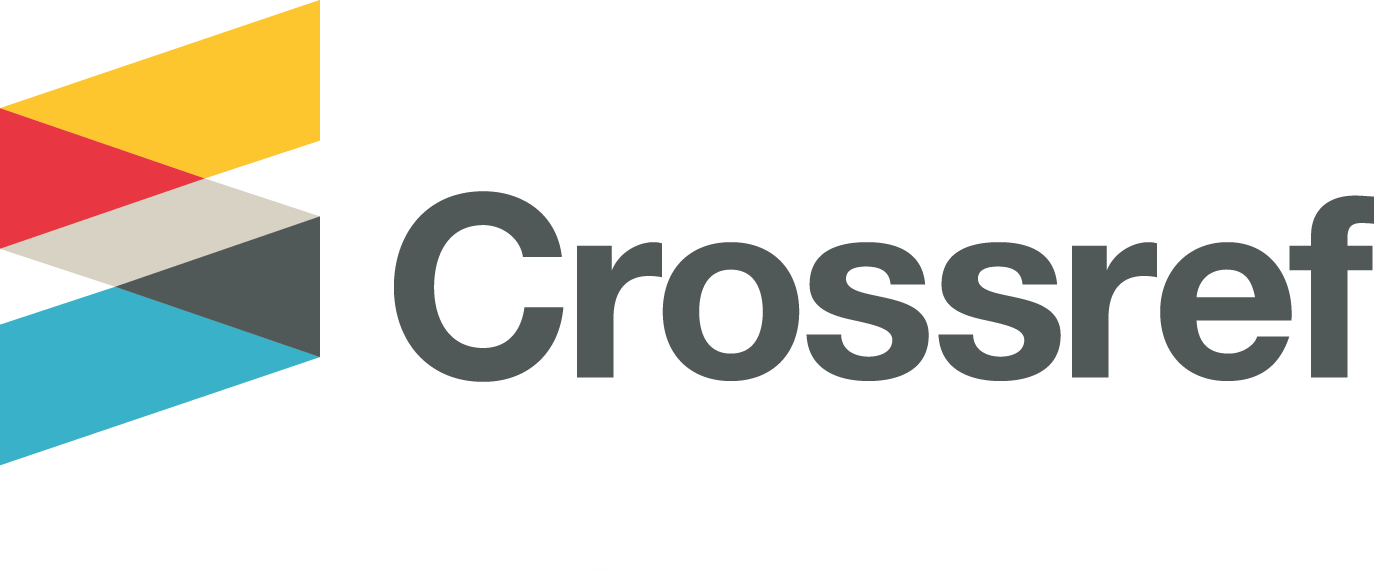The Overview of Bullying Behavior in Adolescents
Abstract
Although bullying has been recognized as a serious problem, bullying cases are still very common, especially among adolescents. The purpose of this study is to look at the description of bullying behavior among adolescents. This research uses a quantitative descriptive approach. The participants of this study were adolescents from high school/vocational and university levels with a total of 250 participants. The participants were selected using a purposive sampling technique. The instrument used in this study was the Bullying Scale for Actual Use. A total of 17% of adolescents experienced little bullying, 65% experienced quite a lot of bullying, and 18% experienced a lot of bullying. The most common types of bullying experienced by adolescents were verbal bullying (49%), emotional/relational bullying (21%), physical bullying (14%) and cyberbullying (1.4%). 23% of the participants had sought help, while 77% of the participants had never sought help. This study shows that most participants who have experienced bullying choose not to seek help because they feel that no one can help them.
Bullying sudah diakui sebagai masalah yang serius, dan masih sangat sering terjadi terutama di kalangan remaja. Tujuan dari penelitian ini adalah untuk melihat gambaran perilaku bullying pada kalangan remaja. Penelitian ini menggunakan pendekatan deskriptif kuantitatif. Partisipan penelitian ini adalah remaja yang berasal dari jenjang SMA/SMK dan Universitas dengan total partisipan sebesar 250. Partisipan dipilih menggunakan teknik purposive sampling. Instrumen yang digunakan dalam penelitian ini adalah Bullying Scale for Actual Use. Analisis data menggunakan SPSS versi 25. Sebanyak 17% remaja mengalami sedikit bullying, 65% mengalami cukup banyak bullying, dan 18% mengalami banyak bullying. Jenis bullying terbanyak yang dialami remaja adalah bullying verbal (49%), bullying emosional/relasional (21%), bullying fisik (14%) dan cyberbullying (1,4%). Terdapat 23% partisipan pernah mencari bantuan, sedangkan 77% partisipan lainnya tidak pernah mencari bantuan. Penelitian ini menunjukkan kebanyakan partisipan yang pernah mengalami bullying memilih tidak mencari bantuan karena merasa tidak ada yang dapat membantu mereka.
Keywords
Full Text:
FULL TEXTReferences
Ballerina, T., & Immanuel, A. S. (2019). Gambaran Tindakan Bullying Pada Siswa Sekolah Menengah Pertama. Jurnal Ilmu Perilaku, 3(1), 18. https://doi.org/10.25077/jip.3.1.18-31.2019
Barus, J., Ninda Safitri, & Husaini. (2023). Study of Verbal Bullying in Early Adolescents. Journal for Lesson and Learning Studies, 6(1), 92–100. https://doi.org/10.23887/jlls.v6i1.61003
Chung, N., Rifayanti, R., & Suhesty, A. (2022). Bagaimana Kaitan Kecemasan Komunikasi Pada Korban Perundungan dengan Dukungan Sosial. Psikoborneo: Jurnal Ilmiah Psikologi, 10(4), 578. https://doi.org/10.30872/psikoborneo.v10i4.8454
Doğruer, N. (2015). Bullying Scale Development for Higher Education. (Disertasi tidak dipublikasikan). Eastern Mediterranean University. Gazimağusa, North Cyprus.
Garvin, G. (2017). Kecerdasan Emosi sebagai Prediktor Kecenderungan Delinkuensi pada Remaja. Jurnal Muara Ilmu Sosial, Humaniora, Dan Seni, 1(1), 145. https://doi.org/10.24912/jmishumsen.v1i1.344
Hanifah, P., Sofia, L., & Ramadhani, A. (2022). Gambaran Pemaafan Pada Korban Perundungan. Psikoborneo: Jurnal Ilmiah Psikologi, 10(2), 345. https://doi.org/10.30872/psikoborneo.v10i2.7616
Harefa, P. P. P., & Rozali, Y. A. (2020). Pengaruh dukungan sosial terhadap konsep diri pada remaja korban bulyying. JCA Psikologi, 1(1), 1–8.
Hellström, L., & Lundberg, A. (2020). Understanding bullying from young people’s perspectives: An exploratory study. Educational Research, 62(4), 414–433. https://doi.org/10.1080/00131881.2020.1821388
Hymel, S., & Swearer, S. M. (2015). Four decades of research on school bullying: An Introduction. American Psychologist, 70(4), 293–299. https://doi.org/10.1037/a0038928
Jaworska, N., & MacQueen, G. (2015). Adolescence as a unique developmental period. Journal of Psychiatry and Neuroscience, 40(5), 291–293. https://doi.org/10.1503/jpn.150268
Kastanya, L., Wijono, S., & Kristijanto, Ignatius, A. (2022). Perilaku Sehat Dan Dukungan Sosial sebagai Prediktor Subjective Well Being pada Purna Tugas di PT Perusahan Listrik Negara (Persero) Wilayah Kota Ambon (Healthy Behavior And Social Support As A Predictor Of Retirement From Pt Listrik Negara (Persero)). Jurnal Psibernatika, 15(1), 47–58. https://doi.org/10.30813/psibernetika
Lestari, W. O. (2018). Pengaruh Konsep Diri dan Konformitas Terhadap Perilaku Bullying. Psikoborneo: Jurnal Ilmiah Psikologi, 6(3), 446–452. https://doi.org/10.30872/psikoborneo.v6i3.4662
Menesini, E., & Salmivalli, C. (2017). Bullying in schools: the state of knowledge and effective interventions. Psychology, Health and Medicine, 22, 240–253. https://doi.org/10.1080/13548506.2017.1279740
Naurah, N. (2023). Kekerasan Verbal Jadi Jenis Bullying yang Paling Banyak Dialami Masyarakat. https://goodstats.id/article/kekerasan-verbal-jadi-jenis-bullying-yang-paling-banyak-dialami-masyarakat-rkXuT
Nunik, K. (2015). Perilaku berisiko kesehatan pada pelajar SMP dan SMA di Indonesia. GSHS Fact Sheet National Bahasa Indonesia. Jakarta: Badan Litbangkes Kementerian Kesehatan RI.
Nurlia, A., & Suardiman, S. P. (2020). The phenomenon of bullying in junior high school students nowadays. International Journal of Education and Learning, 2(1), 7–13. https://doi.org/10.31763/ijele.v2i1.62
Papalia, E, D., & Feldman, Ruth, D. (2014). Perkembangan Manusia (12th ed.). Salemba Humanika.
Ratna, R. (2018). Hubungan Harga Diri dan Interaksi Teman Sebaya Terhadap Perilaku Perundungan. Psikoborneo: Jurnal Ilmiah Psikologi, 6(3), 375–382. https://doi.org/10.30872/psikoborneo.v6i3.4652
Saifullah, F. (2015). Hubungan Antara Konsep Diri Dengan Bullying. Psikoborneo: Jurnal Ilmiah Psikologi, 3(3), 289–301. https://doi.org/10.30872/psikoborneo.v3i3.3786
Santrock, J. W. (2019). Life-span development, 7th ed. In Life-span development, 7th ed. McGraw-Hill Higher Education.
Theodore, W., & Sudarji, S. (2019). Faktor-faktor Perilaku Perundungan pada Pelajar Usia Remaja di Jakarta (Factors Of Bullying Behavior of Adolescence Age Students ’ in Jakarta). Jurnal Psibernatika, 67–79.
Unicef. (2020). BULLYING. Unicef. http://www.unicef.org/indonesia
Van der Cruijsen, R., Peters, S., Zoetendaal, K. P. M., Pfeifer, J. H., & Crone, E. A. (2019). Direct and reflected self-concept show increasing similarity across adolescence: A functional neuroimaging study. Neuropsychologia, 129, 407–417. https://doi.org/10.1016/j.neuropsychologia.2019.05.001
Wang, H., Bragg, F., Guan, Y., Zhong, J., Li, N., & Yu, M. (2023). Association of bullying victimization with suicidal ideation and suicide attempt among school students: A school-based study in Zhejiang Province, China. Journal of Affective Disorders, 323(November 2022), 361–367. https://doi.org/10.1016/j.jad.2022.11.087
Yusuf, A., Habibie, A. N., Efendi, F., Kurnia, I. D., & Kurniati, A. (2022). Prevalence and correlates of being bullied among adolescents in Indonesia: Results from the 2015 Global School-based Student Health Survey. International Journal of Adolescent Medicine and Health, 34(1). https://doi.org/10.1515/ijamh-2019-0064
Zakiyah, E. Z., Humaedi, S., & Santoso, M. B. (2017). Faktor Yang Mempengaruhi Remaja Dalam Melakukan Bullying. Prosiding Penelitian Dan Pengabdian Kepada Masyarakat, 4(2), 324–330. https://doi.org/10.24198/jppm.v4i2.14352
DOI: http://dx.doi.org/10.30872/psikoborneo.v11i4.13220
Refbacks
- There are currently no refbacks.
Copyright (c) 2023 Novia Sri Parindu Purba & Septiyan

This work is licensed under a Creative Commons Attribution-ShareAlike 4.0 International License.
PSIKOBORNEO: Jurnal Ilmiah Psikologi Published by Faculty of Social and Political Siences, University of Mulawarman, Samarinda, East Kalimantan and This work is licensed under a Creative Commons Attribution-ShareAlike 4.0 International License.
________________________________________
PSIKOBORNEO: Jurnal Ilmiah Psikologi
Department of Psychology
Faculty of Social and Political Siences, University of Mulawarman
Jl. Muara Muntai Kampus Gn. Kelua Samarinda 75411
Phone: +62 813 35350368
E-Mail: psikoborneo@gmail.com / psikoborneo@fisip.unmul.ac.id
















